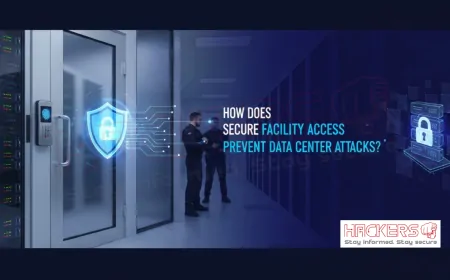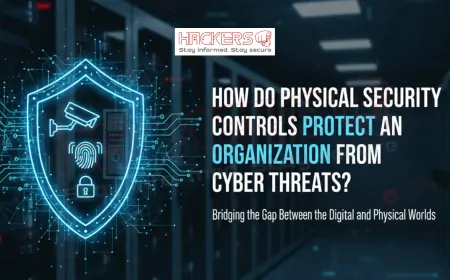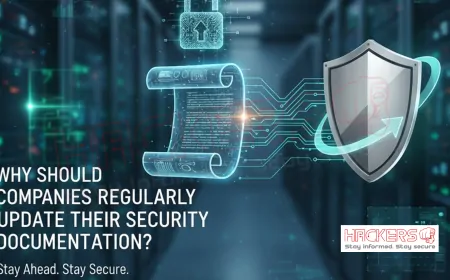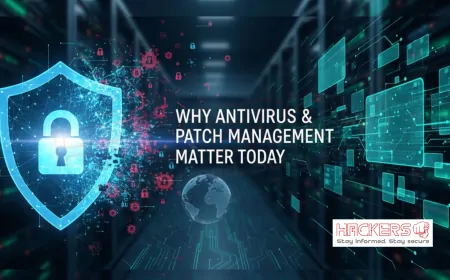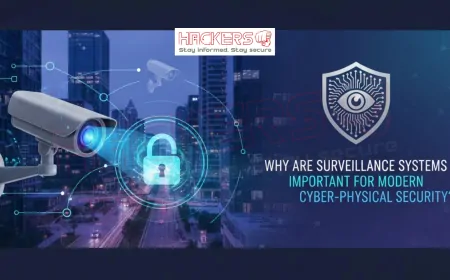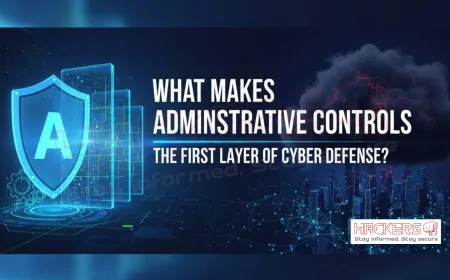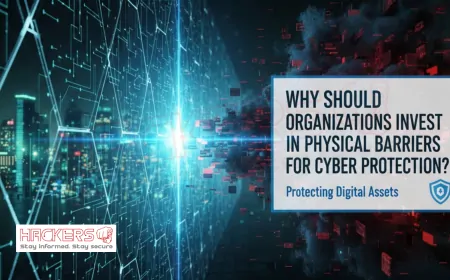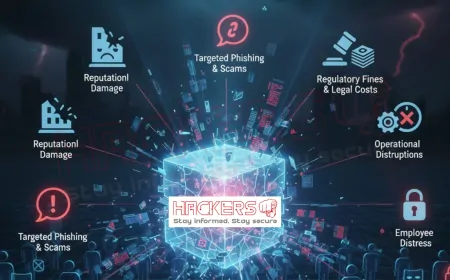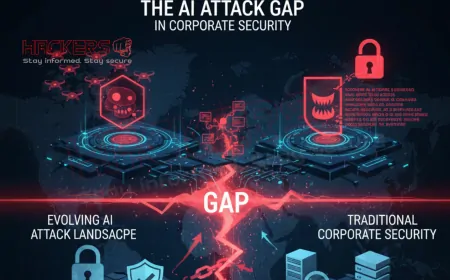Why Is Encryption Becoming Mandatory for Every Business Today?
Picture a hacker lurking in the shadows of the internet, sifting through stolen data from a recent breach. Names, addresses, financial details: all laid bare because the company did not protect its information properly. In 2025, stories like this are all too common, with cybercrime costs projected to hit $10.5 trillion globally. But there is a powerful tool that can turn this vulnerable data into an unreadable puzzle for unauthorized eyes: encryption. Once seen as an optional extra for tech-savvy firms, encryption is now becoming a must-have for every business. It scrambles data so only those with the right key can access it, shielding sensitive information from prying eyes. As regulations tighten and threats evolve, ignoring encryption is no longer an option. In this blog post, we'll explore why encryption is essential, breaking down the reasons in simple terms. Whether you're a small business owner or just starting to think about data security, you'll learn how this technology protects your operations and why adopting it now could save you from future headaches.
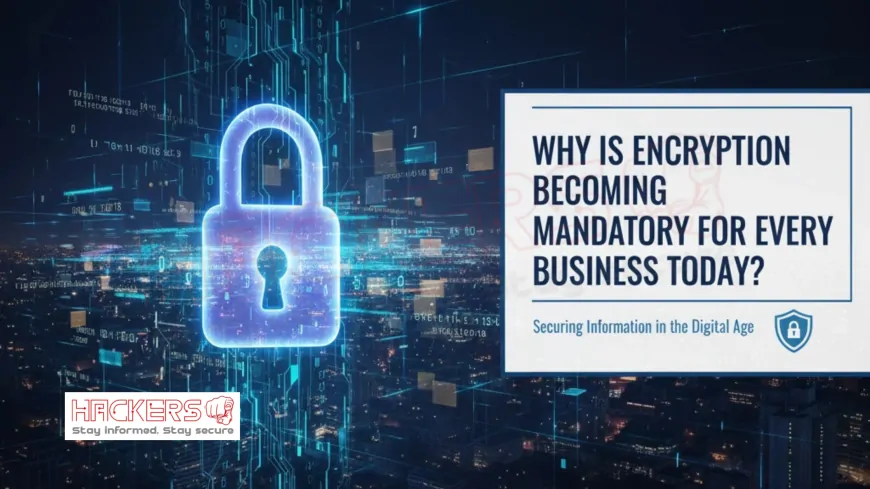
Table of Contents
- What Is Encryption?
- The Rise of Cyber Threats in 2025
- Regulatory Requirements Driving Encryption
- Benefits of Encryption for Businesses
- Types of Encryption Every Business Should Know
- How to Implement Encryption Effectively
- Challenges in Adopting Encryption
- Real-World Case Studies
- Future Trends in Encryption
- Conclusion
- FAQs
What Is Encryption?
Encryption is a method of converting readable data into a coded form that can only be deciphered with a specific key. Think of it as locking your valuables in a safe: without the combination, no one can get inside. In the digital world, this process protects information from unauthorized access, whether it's stored on a computer or sent over the internet.
For beginners, encryption works through algorithms, which are sets of mathematical rules. There are two main types: symmetric, where the same key encrypts and decrypts data, and asymmetric, which uses a public key for encryption and a private key for decryption. Symmetric is faster but requires secure key sharing, while asymmetric is safer for sharing over networks.
Why does this matter for businesses? Data is the lifeblood of modern operations, from customer details to financial records. If stolen, it can lead to identity theft, fraud, or competitive disadvantages. Encryption ensures that even if data falls into the wrong hands, it's useless without the key.
In 2025, encryption is not just about privacy: it's a core security practice. Tools like AES, or Advanced Encryption Standard, are widely used for their strength. Businesses of all sizes are adopting it to stay ahead of threats, as we'll discuss further.
Understanding encryption starts with recognizing its role in everyday tech. Your smartphone uses it for messages, banks for transactions. For companies, it's the same principle, scaled up to protect vast amounts of data.
The Rise of Cyber Threats in 2025
Cyber threats are evolving rapidly, making encryption a necessity. In 2025, attacks like ransomware, where hackers lock data and demand payment, are rampant. Reports show a 37% increase in such incidents from last year.
Why the surge? Remote work and cloud storage expand attack surfaces, the points where threats can enter. AI-powered attacks make them smarter, evading traditional defenses. Small businesses are hit hard, often lacking robust security.
Encryption counters this by protecting data at rest, in transit, and in use. Data at rest is stored files, in transit is sent information, and in use is active processing. Encrypting all three ensures comprehensive coverage.
Consider a breach: without encryption, stolen data is immediately usable. With it, attackers get gibberish. This buys time for response and minimizes damage. As threats grow, encryption becomes the shield every business needs.
Statistics from IBM's 2025 report highlight the cost: breaches average millions, but encrypted data reduces impact significantly.
Regulatory Requirements Driving Encryption
Governments worldwide are mandating encryption through regulations. In 2025, laws like GDPR in Europe and HIPAA in the US require data protection, with heavy fines for non-compliance. GDPR can penalize up to 4% of global revenue for breaches.
Why this push? Data breaches expose personal information, leading to privacy violations. Regulations aim to protect consumers, forcing businesses to encrypt sensitive data. PCI DSS for payment cards also demands it.
New 2025 updates emphasize data-in-use encryption, protecting information during processing.
For businesses, this means encryption is no longer optional: it's a legal must. It demonstrates due diligence, avoiding penalties and lawsuits. As global standards tighten, adopting encryption ensures smooth operations across borders.
In short, regulations are the stick pushing businesses toward encryption, but the carrot is better security and trust.
Benefits of Encryption for Businesses
Encryption offers numerous benefits. First, it safeguards against data theft: encrypted information remains secure even if accessed. This reduces breach impacts, saving costs on recovery and notifications.
It builds customer trust: knowing data is protected encourages sharing information, vital for e-commerce or services. Compliance is another plus, avoiding fines that can cripple small firms.
Encryption enables safe cloud use, where data is stored remotely. It protects intellectual property, giving competitive edges. In 2025, it's a differentiator: encrypted businesses stand out as secure.
It mitigates insider threats: employees cannot misuse encrypted data without keys. Overall, it provides peace of mind in a risky digital landscape.
Types of Encryption Every Business Should Know
Businesses have several encryption types to choose from. Symmetric encryption uses one key for both actions, fast for large data. AES is a common standard, used in file encryption.
Asymmetric encryption uses public-private key pairs, secure for sharing. RSA is popular for emails or transactions.
Full-disk encryption protects entire drives, like BitLocker on Windows. End-to-end encryption ensures only sender and receiver access messages, as in WhatsApp.
Homomorphic encryption allows computations on encrypted data without decrypting, emerging for cloud analytics.
Choosing depends on needs: symmetric for speed, asymmetric for security. Mixing types provides best coverage.
| Type | Description | Use Case |
|---|---|---|
| Symmetric | One key for encrypt/decrypt | File storage |
| Asymmetric | Public-private keys | Secure communications |
| Full-Disk | Entire device protection | Laptops, servers |
| End-to-End | Sender-receiver only | Messaging apps |
How to Implement Encryption Effectively
Implementing encryption starts with assessment: identify sensitive data needing protection. Choose tools fitting your setup, like built-in OS features or third-party software.
Manage keys carefully: use HSMs for secure storage, as per 2025 standards.
Integrate with existing systems: encrypt databases, emails, cloud storage. Regular audits ensure effectiveness. For small businesses, start with basics like HTTPS for websites.
Partner with experts if needed: consultants can guide setup. Effective implementation turns encryption from a chore to a seamless safeguard.
Challenges in Adopting Encryption
Adopting encryption has hurdles. Performance impact: encrypting large data slows systems, but modern hardware minimizes this.
Key management is tricky: lost keys mean lost data. Solutions like cloud key services help.
Cost: Initial setup expenses, but long-term savings outweigh. Compatibility issues with old systems require updates.
Regulatory complexity: navigating laws takes effort, but tools simplify compliance. Overcoming these makes encryption viable for all.
Real-World Case Studies
Case studies show encryption's value. A healthcare firm used it to protect patient data during a breach, minimizing exposure and fines.
A bank implemented asymmetric encryption for transactions, thwarting fraud attempts. Small businesses benefit too: an e-commerce site encrypted customer info, building trust post-incident.
Contrast with unencrypted breaches: companies faced huge penalties. These examples prove encryption's practical impact.
Future Trends in Encryption
In 2025, trends shape encryption. Quantum-resistant algorithms prepare for future computing threats. Homomorphic encryption gains traction for secure computations.
AI integrates for smarter key management. Regulations evolve, mandating stronger standards like data-in-use protection.
Cloud-native encryption simplifies for remote setups. Businesses adopting these stay ahead, turning encryption into a strategic asset.
Conclusion
In conclusion, encryption is becoming mandatory due to rising threats, regulations, and benefits like protection and trust. From basics to implementation, it's accessible for all businesses. Challenges exist, but solutions make it worthwhile. As trends advance, embracing encryption now ensures security tomorrow. Every business, big or small, should prioritize it for a safer future.
What is encryption?
Encryption converts data into code to prevent unauthorized access.
Why is it mandatory now?
Due to threats, regulations, and data value.
What are cyber threats?
Attacks like ransomware stealing or locking data.
What regulations require it?
GDPR, HIPAA, PCI DSS, and state laws.
What benefits does it offer?
Protection, compliance, trust, cost savings.
What types exist?
Symmetric, asymmetric, full-disk, end-to-end.
How implement it?
Assess data, choose tools, manage keys, train staff.
What challenges?
Performance, key management, cost, compatibility.
How overcome challenges?
Use modern tools, services, updates.
Case studies show what?
Reduced breach impact, fraud prevention.
Future trends?
Quantum-resistant, homomorphic, AI integration.
Is it for small businesses?
Yes, essential and accessible.
What is symmetric encryption?
Uses one key for both actions.
What is asymmetric?
Uses public-private key pair.
What is data-in-use?
Data during processing, now protected.
Key management?
Secure storage and handling of keys.
HSMs?
Hardware Security Modules for keys.
Encryption vs. hashing?
Encryption reversible, hashing one-way.
Cost of breaches?
Millions, reduced with encryption.
Why trust building?
Shows data security commitment.
What's Your Reaction?









